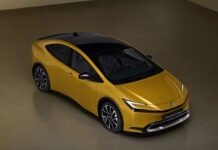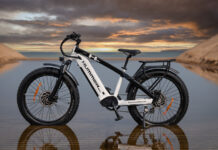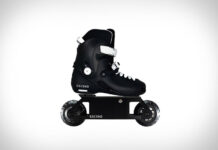There are affordable cars, elite cars, special cars, and there are experimental cars, such as the Bloodhound supersonic car of the new generation. Not so long ago, it was brought to one of the British airports with an intention to set a new speed record. Let’s see what the result was.
Bloodhound SSC Supersonic car completed its first public tests at the airport in Newquay (Cornwall, UK) on October 26. This is the first test of the car, created specifically to break the world speed record for land vehicles and overcome the mark of 1600 km/h. The car was conceived almost 10 years ago and was first introduced in public in 2015.
During the tests, Bloodhound made two test runs, accelerating to 338 km/h in just eight seconds. Powered by the Rolls-Royce EJ200 jet engine, the car swept like a rocket along the airstrip that is 2.7 km long. The length of the airfield runway did not allow to reach any higher speed.
Despite the fact that 338 km/h is well below the declared speed of the car (1600 km/h), driver Andy Green claimed it was just a “test drive” of the jet car. The car is designed for high speed in the desert, and not on the road, but it is already clear what it is capable of since it accelerates from zero to 338 km/h in less than 8 seconds.

Initial runway tests are used to check various vehicle functions. During these tests, Bloodhound was equipped with the wheels converted from the English Electric Lightning fighter rather than the required high-tech solid aluminum wheels.
Green says that stopping a slippery 5-ton car on low-profile aircraft tires is a problem, especially with a relatively limited runway length of 2.7 km. Besides, the car continues to accelerate even after the driver releases the accelerator. During the initial dynamic tests, Andy Green found that in order to accelerate the car to 320 km/h, he had to release accelerator at the speed of 210 km/h, and after that, the car was accelerating for another 2 seconds. In order to slow down the Bloodhound, he needed to barely touch the brake pedal for 2 seconds to “warm up” the disc brakes made from carbon fiber before actual braking.
Now the team will be preparing for the next test races in 2018, and it is going to break the record in 2020 on the 19-kilometer stretch of the flat salt pan basin of Haxkin-Pan dry lake in South Africa. Nammo is currently developing a special rocket engine, which will be used instead of the current Eurofighter Typhoon fighter engine.







